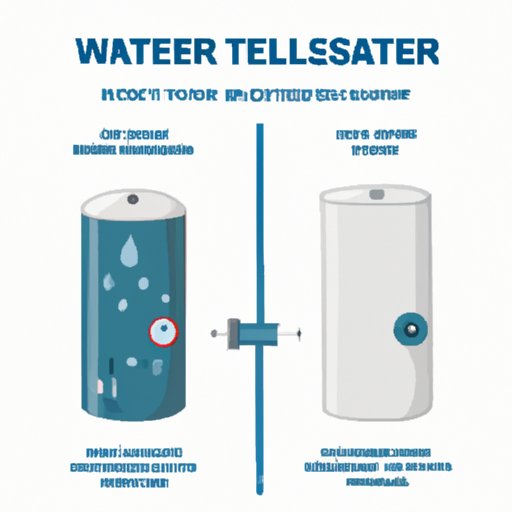
Introduction
Water heaters are an essential part of any home, providing hot water for daily tasks like bathing, washing clothes, and cooking. However, like any appliance, water heaters require regular maintenance to function at their best. One critical step in maintaining your water heater is flushing it out regularly.
Flushing your water heater involves draining the accumulated sediment and debris from the tank, which can improve performance and extend its lifespan. In this article, we will provide a detailed step-by-step guide on how to flush a water heater to ensure optimal performance and efficiency.
Step-by-Step Guide
Flushing your water heater is easier than you may think, and can be done in just a few simple steps. Before starting, ensure that you have all the necessary tools and materials, which we’ll discuss later in this article.
1. Turn off the power supply
Ensure that you turn off the power supply to your water heater at the circuit breaker or fuse box. If you have a gas water heater, turn the thermostat knob to the “pilot” setting.
2. Turn off the water supply
Turn off the water supply to your water heater by shutting off the valve located near the top of the unit.
3. Set up a draining location
Place a bucket or container underneath the drain valve located near the bottom of the unit.
4. Open the drain valve
Open the drain valve by turning it counter-clockwise using a wrench. The water will begin to flow out of the valve and into the bucket.
5. Flush out the sediment
As the water drains from the tank, use a hose to flush out any remaining sediment or debris. Connect the hose to the drain valve and run it outside or into a nearby drain.
6. Refill the tank
After the water has finished draining, close the drain valve and slowly turn on the water supply to refill the tank.
7. Turn the power supply back on
Once the tank is full, turn on the power supply to your water heater at the circuit breaker or fuse box. If you have a gas water heater, turn the thermostat knob back to the desired temperature setting.
Common Problems and Solutions
When a water heater is not regularly flushed, sediment and debris can accumulate in the tank. This can cause several issues, including reduced efficiency, lower hot water supply, and, in some cases, damage to the unit.
If you experience any of the following problems, it may be due to a lack of flushing or draining of your water heater.
– Noise coming from the unit
– Lukewarm water
– Discolored water
– Limited hot water supply
To solve these problems, you must first flush the water heater to remove the buildup of sediment and debris. If problems persist, you may need to call a licensed professional to inspect your unit and recommend any necessary repairs.
The Benefits of Flushing
There are many benefits to regularly flushing your water heater.
1. Improved Efficiency
Sediment buildup causes your water heater to work harder, resulting in increased energy usage. By flushing your water heater regularly, you can improve efficiency and reduce energy costs.
2. Longer Lifespan
Flushing your water heater can extend its lifespan by reducing wear and tear on the unit. By regularly removing sediment and debris, you can prevent damage to the tank and other components.
3. Better Water Quality
Sediment in the tank can affect the quality of your hot water, making it cloudy or discolored. Flushing your water heater can improve the quality of your hot water, making it clearer and cleaner.
Tools Needed
To effectively flush your water heater, you will need the following tools and materials:
– Protective gear (gloves, goggles)
– Bucket or container
– Hose
– Wrench
– Towel or cloth
Before starting, ensure that you have all the necessary tools and that you know how to use them safely and effectively.
Video Tutorial
If you prefer to learn via video, we have created a video tutorial to guide you through the process of flushing your water heater. In the video, we provide additional tips on safely and effectively completing the process.
Conclusion
Flushing your water heater is an essential maintenance task that can help improve efficiency, extend lifespan, and improve the quality of your hot water. By following this step-by-step guide and using the right tools and materials, you can easily flush your water heater and prevent future issues.
Remember to regularly flush your water heater to ensure optimal performance and efficiency. If you experience any issues or problems, consult a licensed professional to inspect your unit and recommend any necessary repairs.
Now that you know how to flush your water heater, we encourage you to take action and maintain your appliance for the best performance and durability.





